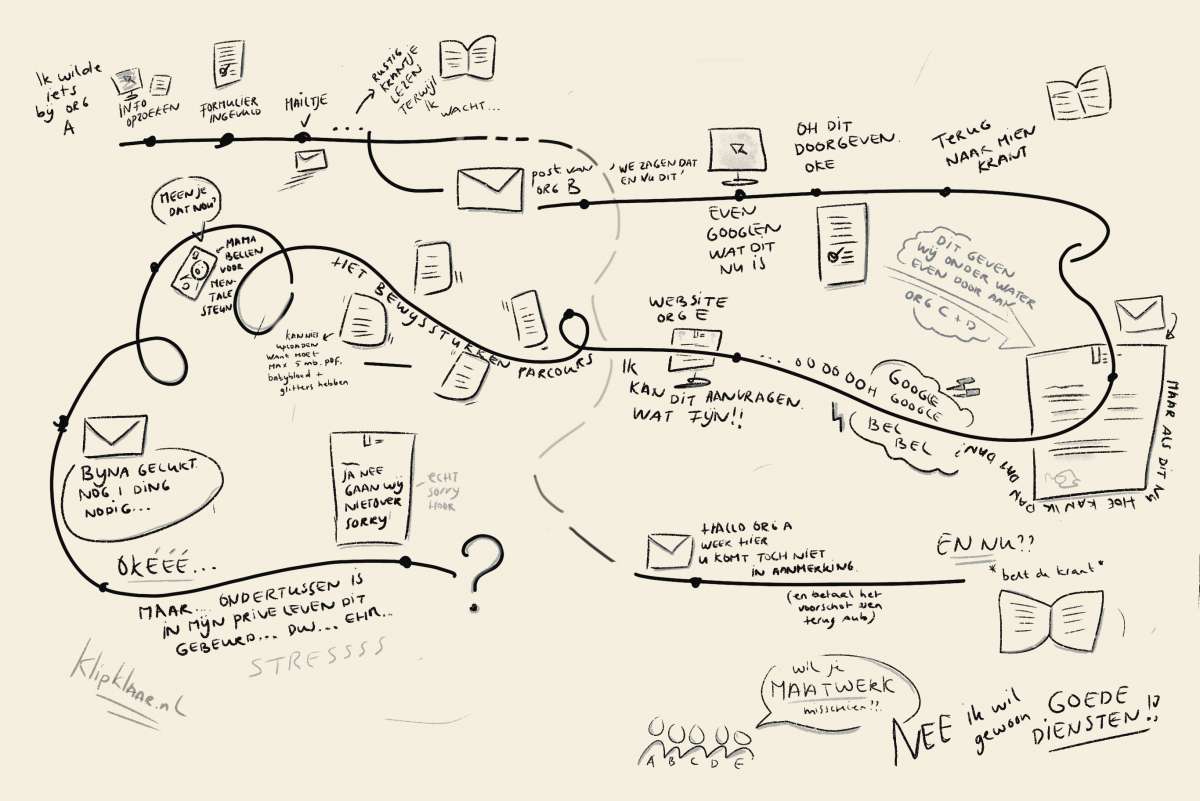‘Nice this story about customization, but surely that can never be done for everyone?’ That was the first question I got from the audience the other day when I gave a lecture at a government organization about The Compassionate Civil Servant and the relationship citizens have with government. I was confused. I hadn’t mentioned customization in services I thought. I get questions like that a lot, by the way.
Why do people keep thinking I’m talking about customization when I talk about more empathy in government?
Hence this blog, which is NOT about customization. Okay, a little bit then. But it is mostly about standard services that are good for people because it is better to go full steam ahead with that than with customization.
What is customization?
If you ask me, I say ‘anything that deviates from the process because the situation calls for it’. A very human and fine process does not have to be customized if that is always how it goes.
Customization involves a real deviation from the standard. For example, a government employee makes a decision that allows someone to get or do something even though they are not entitled to it under the regulation. Or a staff member (or sometimes an entire team) looks at the situation separately with the person to figure out what is going on when in the normal process there is no time for that. An exception will be made for someone.
This is directly also the tricky thing about customization, because you have to justify the decision anyway. Therefore, in some regulations there is a hardship clause that provides a legal basis for exceptions. But even then you should be able to explain why the exception is justified, because otherwise the neighbors will complain ‘how come she got it, and I didn’t’. Unequal cases should be treated equally unequally, so to speak. How you do that is quite tricky and can also put a lot of mental pressure on the deciding officials.
I started with ‘if you ask me’, because there is no official definition of customization in the Dutch government yet. We are working on it, but right now each organization, and perhaps each team – you know how it goes – uses its own definition. That makes it difficult to have a good conversation about this, I think.
Instead of focusing on customization, I prefer to talk about customization’s antithesis: the standard service. When we invest heavily in government services that are already so good for people you don’t necessarily need customization. The service itself can be good.
Rather a good standard process than customization.
Citizens like that too, because no one likes being the exception and going through extra hassles (customization is also more hassle for citizens than if it had been appropriate right away).
What is a standard service?
I draw the steps that are usually in there.

An example. You want to apply for student loans because you are going to start studying. You search for information, online, through school, through your dad. Finally, you log in to MyDUO and fill out the digital form. You get a confirmation email and a while later the student finance in your account.
It is not rocket science. Government services often mean: seeking information, filling out forms, possibly with supporting documents and then waiting for you to ‘get the thing (settled)’ you are concerned about, possibly with confirmation. Sometimes you go to a counter for this, but usually the counter is online at a website.
Another example. You can argue about whether it is really a service but fine: you get a fine from the CJIB, the Dutch debt collection centre. Which starts on your door mat (or actually on the road when you started the offense by going beyond the speed limit maybe). You may be looking for some additional information and pay. Done.
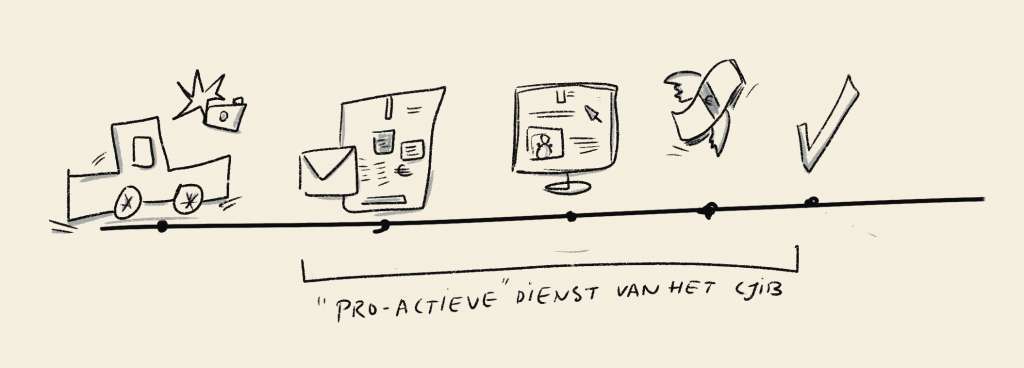
As a service designer, I call these examples the happy flow. How someone experiences this can be called a customer journey (but I kind of hate that word ‘customer’ in government). You can expand this diagram to include the government side and show the work process behind it. This is called a service blue print, a schematic of a service from the perspective of the customer (citizen) and the provider (government). For example, like this.
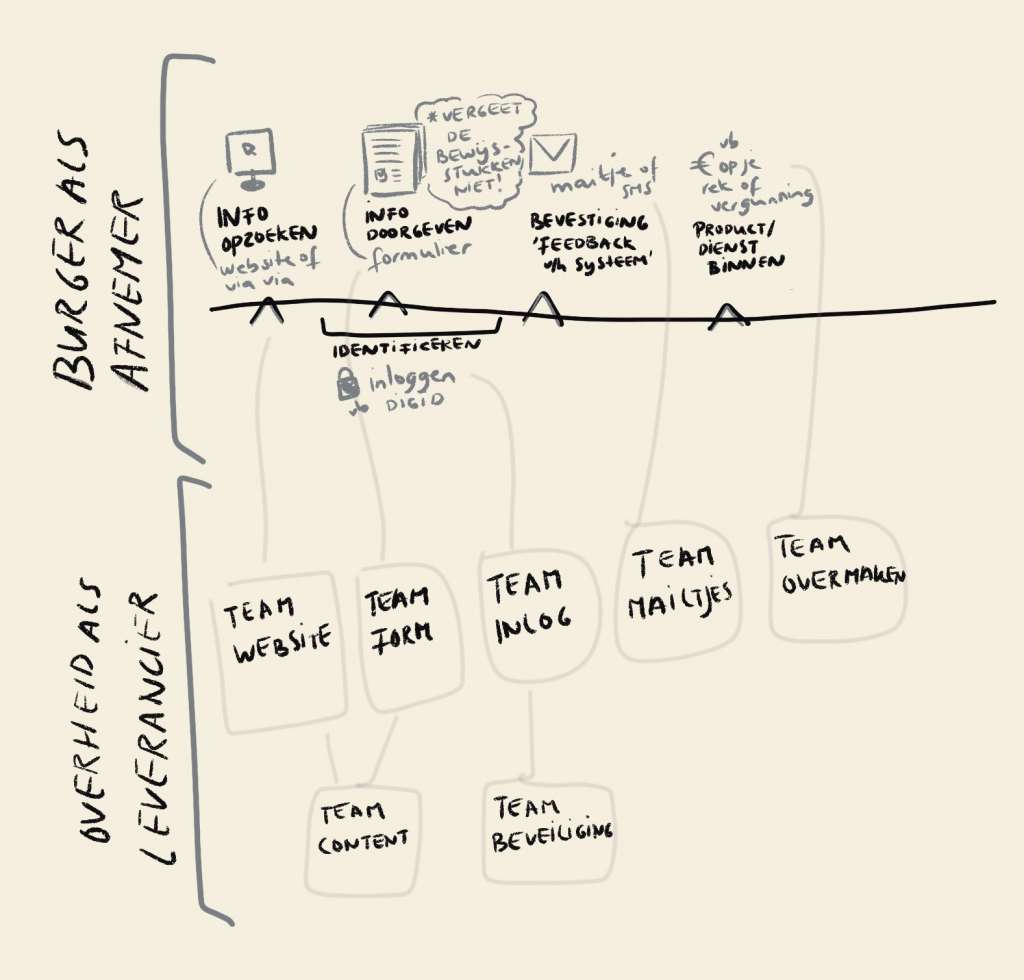
Want to see a much more elaborate version than this sketch? I once tracked for a month everything that I was doing with the government and then mapped out the government’s side of things as well as my own. I made a big schematic drawing of it.
You could add to this the standard steps the government offers for when you disagree. You can appeal the decision, for example, if you think the fine is unjustified, and then even go to court. All standard.
So when then customization? If this happy flow doesn’t work?
No, not yet.
The policy has also come up with exceptions as to why something might not work. There are then additional arrangements for that and you can incorporate them into a standard service. A kind of variation on the happy flow.
For example, with student loans. Suppose you become ill during your studies, physically or mentally. Your studies are not going that good anymore and you get delayed. At the end of your studies, you get into a jam, because you are basically entitled to x number of years of student finance and it runs out, but your studies are not finished. With a letter from your dean or doctor, you can apply for an additional year of student loans. No customization! It is just a regulation that is a side branch of the happy flow.

An example from the CJIB then. You receive a fine, but the letter is still sent to your old address. That’s where your ex lives, you broke up and your ex didn’t forward the fine. Very annoying and now it has accumulated to a much larger amount due to the reminders. You call the CJIB, explain the situation, and the CJIB says ‘if you pay the original amount, it’s fine’. This must be customized, surely.
No, it’s not, this situation happens more often and the work instruction for CJIB employees tells them how to resolve it. (I can well imagine that this was once a custom process and then CJIB included it in the work instruction when it turned out not to be so incidental – hooray for CJIB).
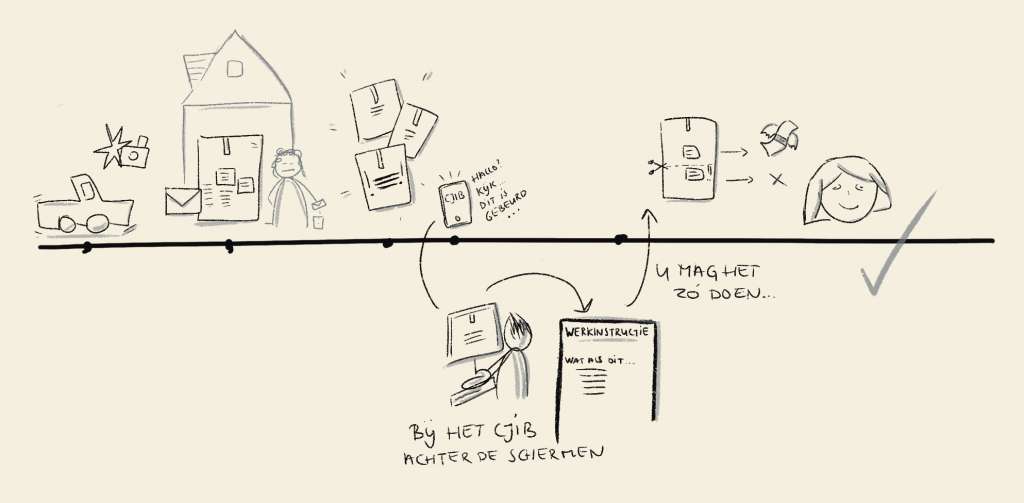
What we can learn from CJIB is that you can adjust services. Based on feedback from citizens through the telephone, the website, social media or in many other ways, you can learn, add interventions in your process and thus make your service better and better. Perfecting your standard. Love it.
You might already notice. These are standard services. Employees do not have to make their own consideration of whether it is lawful and not arbitrary. That consideration has already been done by including it in the standard service – for everyone. Parts of these types of services can even be left to computers by the government so that you, as a citizen, get instant confirmation that it is in order and do not have to wait for an official to look.
But the problem in government is that most services are not created from the user’s perspective.
The happy flow that the government comes up with does not necessarily make people happy. The government invents services that are mostly good for the government itself.
Processes must be as efficient as possible and are outsourced entirely to computers. Changes require a business case first, preferably for savings. KPIs (success metrics) are about whether people can deal with it on their own and most importantly Don’t Call. To help with that, we are setting up points in libraries to make people more digitally proficient (oh the irony).
Organizations carry out regulations that they have as a statutory duty and how this intersects with other regulations of other organizations… well, that’s not their responsibility now, is it? And that someone could arrange something with multiple organizations in one fell swoop, and they won’t have to go from site to site, or that the government proactively thinks along: ‘oh gosh, this will also affect your rent allowance if you apply for this with us’… Wouldn’t that be something?
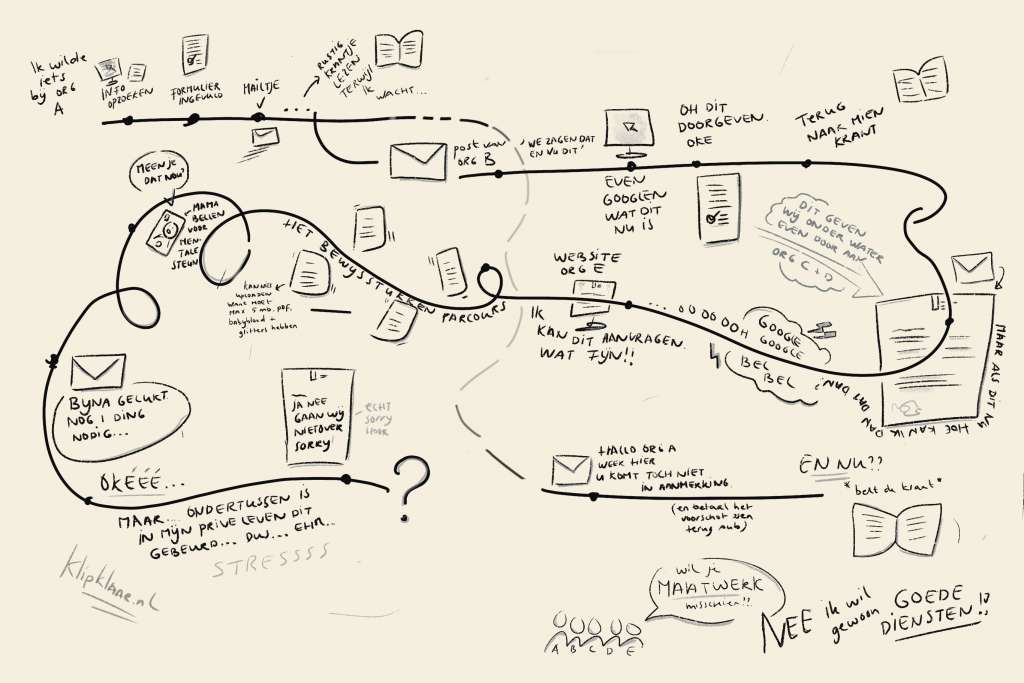
And so people get into trouble and in the newspapers. Everyone angry, the House of Representatives angry: the social pendulum is swinging toward More Human Size. We get high on stress and exclaim: ‘okay, we’ll solve it with customization.’
We don’t have to if we start with services that are good for people.
How to make good services? That’s for other blogs. But you can read Good services by Lou Downe to get a start (or this summary of it I wrote earlier).
